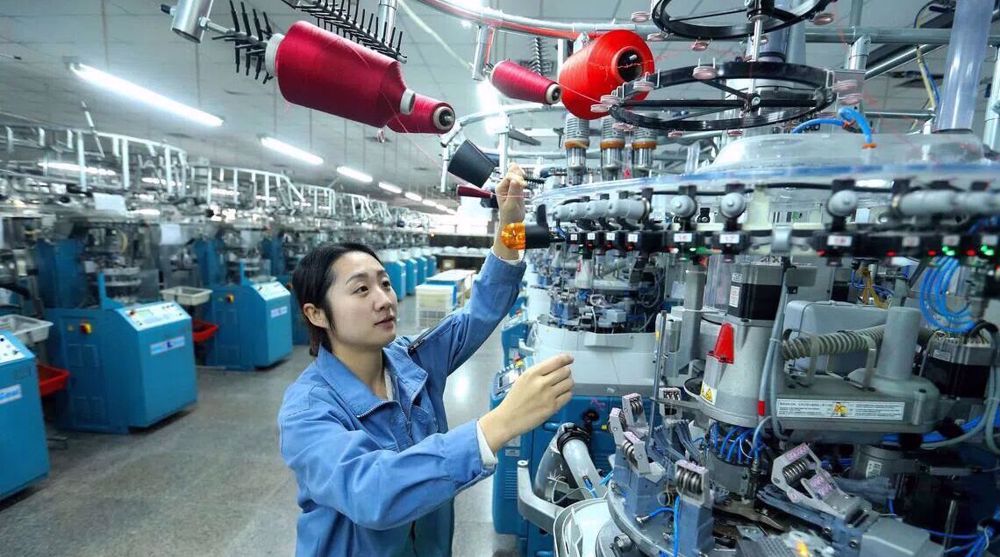China cuts reserve requirements for banks to boost economy
The central bank of China has reduced the proportion of funds, which banks are obliged to have as reserves in a bid, which has been seen as Beijing's latest effort to speed up the country’s slowing growth.
The People's Bank of China (PBoC) said in a statement on Monday that it has plans to trim down the so-called "reserve requirement ratio" (RRR) for financial institutions by 0.50 percentage points, in order to help them free up more funds to lend, AFP reported.
The PBoC said in a statement on its website that the RRR move was aimed at maintaining liquidity and guiding the steady growth of money and credit.
"The central bank wants to make up for a shortage of liquidity... to stabilize the economy," said Chen Ji, a senior analyst at the Bank of Communications in Shanghai.
The new measure was taken shortly after a meeting of G20 finance ministers in Shanghai, during which the participants stressed the need to use all available policy tools to boost global growth.
"The move underscores a message that officials have repeated in recent days, including at the G20 meeting: policymakers still have room to support the economy," chief China economist at Capital Economics, Mark Williams, said in a research note.
On Friday and on the sidelines of the G20 ministers meeting, head of PBoC, Zhou Xiaochuan, said the country could still use monetary tools to help boost its slowing economy.
"China still has some monetary policy space and monetary policy tools to address potential downside risk," he added.
The decision also came ahead of the inauguration of the annual meeting of the National People's Congress (NPC), which will open this weekend and is expected to unveil economic targets for 2016 in addition to a five-year development plan.
China's economy grew by an annual 6.9-percent rate last year, which was seen as the lowest rate of growth for the world’s second biggest economy in a quarter of a century, while analysts forecast further economic slowdown during the current year.
The RRR cut, which was expected by economists, is considered as the first across-the-board reserve ratio cut since October last year, when the central bank of China also lowered it by the same margin.

According to analysts, the latest move lowers the reserve ratio to 17 percent for major banks.
Analysts have also anticipated that China’s Premier Li Keqiang will declare a lower growth target at the NPC meeting, which would be likely located in a range of 6.5 to 7.0 percent compared to previous target of around 7.0 percent.
The central bank of China has already slashed interest rates six times since late 2014. It has also decreased the RRR several times while also injecting massive amounts of money through open market operations.
Before the announcement of the RRR cut, the central bank pumped 230 billion yuan (USD 35 billion) into the financial system on Monday to ease tight liquidity, bringing total fund injections over the past week to more than 1.0 trillion yuan, according to state media.
"The PBoC of course has been intervening in the market to support the renminbi and so that withdraws liquidity. And the reserve requirement cuts are necessary to offset that effect," said Klaus Baader, head of research for Asia and chief economist for Asia-Pacific of Societe Generale.
Sanctions slow Iran’s 5G expansion despite growth in network rollout
VIDEO | Chinese, South Korean presidents hold summit amid global outcry against US
Israel pushes to keep Gaza closed to foreign media
VIDEO | Militant escape and assassination attempt signal worsening security in eastern Yemen
Over 40 candidates register to compete for Iraq's presidency
HTS and Israeli officials meet in Paris for talks amid attacks on Syria
Trump’s ‘peace through strength’ means ‘law of jungle’: Iran FM
Iran restores gas production at refinery damaged in Israeli aggression














 This makes it easy to access the Press TV website
This makes it easy to access the Press TV website